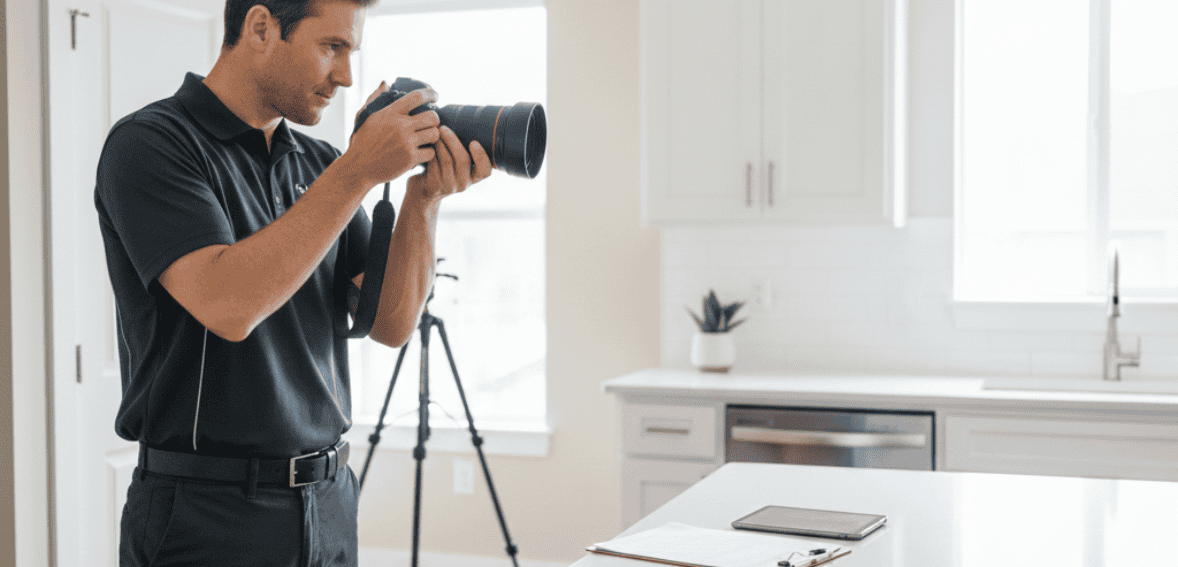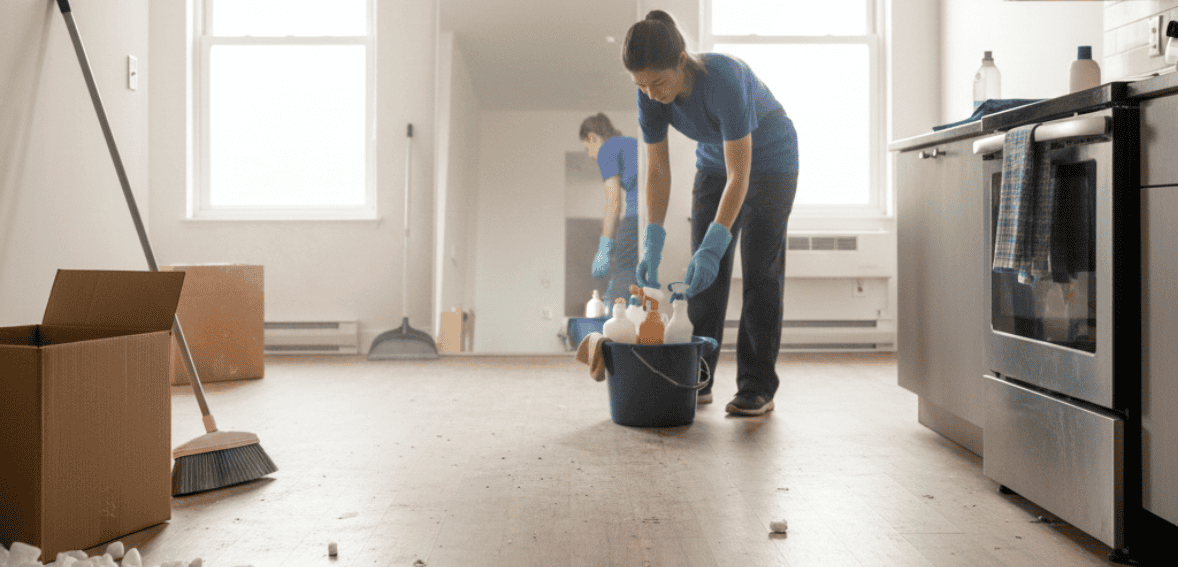
by admin November 26, 2025
The relationship between a landlord and a tenant is heavily shaped by the first and last impressions in a rental property. A move-in inspection sets expectations, while a move-out inspection determines fairness. When done carefully and professionally, these moments create clarity, reduce stress, and significantly minimize arguments about security deposits or property conditions. When done poorly, they create tension, mistrust, and disputes that strain both parties emotionally and financially.
Move-In/Move-Out Inspection Best Practices are no longer just a checklist exercise. They form the foundation of transparent property management, protect legal rights, support accurate documentation, and build trust. A well-structured inspection process ensures everyone understands the property’s condition from Day 1, eliminating uncertainty later when repairs or deductions arise. In a rental industry where turnover can be expensive and time-consuming, reducing conflict around move-out inspections helps protect relationships, minimize legal exposure, and maintain property condition efficiently.
An intense inspection routine also helps prevent damage escalation. Something minor discovered at move-in like a dripping faucet or a loose tile can be fixed early, rather than becoming a costly repair months later. Equally, capturing detailed records at move-out prevents misunderstandings about wear and tear versus tenant negligence. As expectations continue to evolve and rental laws place greater emphasis on transparency, clear documentation, and strong communication, these qualities are central to smooth transitions.
Why Move-In/Move-Out Inspection Best Practices Matter More Than Ever

Move-In/Move-Out Inspection Best Practices are essential for protecting both parties at the start and end of any lease. An inspection is more than a formality; it is a legal safeguard and a relationship builder. At move-in, tenants need confidence that they are stepping into a clean, safe, well-maintained home. Landlords need an accurate baseline record to reference later. When both parties participate openly in the process, they begin the rental relationship from a place of mutual respect.
At move-out, the same documented baseline serves as the reference point for fair decisions on cleaning, repairs, and deposit refunds. Without proper documentation, disagreements turn emotional, and even responsible tenants can feel unfairly accused. Landlords may face negative reviews, legal complaints, and delayed turnaround on the property. Move-In/Move-Out Inspection Best Practices eliminate doubt by providing clear evidence of what was present and what changed over time.
The lack of detail is one of the biggest causes of disputes. A vague note like “floor scratched” means nothing compared to a timestamped photo showing a deep gouge near the bedroom entrance. Similarly, tenants feel better knowing that the damage they did not cause is already recorded and won’t be blamed on them. This transparency helps ensure the move-out does not feel like a surprise evaluation, but rather a predictable process guided by fairness, documentation, and communication.
In today’s rental environment, where reviews and word of mouth influence occupancy and turnover costs, the experience during move-out can shape a property’s long-term reputation. Good inspection practices serve the dual purpose of protecting physical property and nurturing professional credibility.
Setting Clear Expectations from Day One

The strongest Move-In/Move-Out Inspection Best Practices begin long before the tenant collects their keys. Clear expectations clarify responsibilities, reduce anxiety, and set standards for cleanliness, maintenance, and care. Tenants need to understand what condition is expected when they eventually move out, and landlords need to define what qualifies as normal wear and tear versus actionable damage.
Having a structured move-in walkthrough that includes detailed notes, high-quality photos, and agreement signatures ensures everyone begins with the same understanding of the property’s condition. This prevents arguments later because there is no debate over what existed at the start. During this stage, tenants should be encouraged to ask questions and report anything that was missed. When tenants feel included, they feel respected—not monitored.
Equally important is explaining how the deposit works and what could lead to deductions. When tenants know precisely what is expected, they are far more likely to protect the property and maintain cleanliness throughout the lease term. Move-In/Move-Out Inspection Best Practices emphasize transparency because uncertainty breeds conflict, while clarity builds compliance.
Some property managers also schedule a mid-lease check-in. This approach is not about policing tenants, but about identifying repairs early and preventing bigger expenses later. For tenants, it communicates care and proactive management rather than neglect. For the property, it extends the lifespan and keeps turnover costs predictable.
Documenting Property Condition with Transparency and Precision

Documentation is the core of effective Move-In/Move-Out Inspection Best Practices, because without it, every disagreement becomes subjective. Professional documentation means more than casually walking through a unit with a notepad. It requires detailed written descriptions, photo documentation, timestamps, and, ideally, video where needed.
When documenting at move-in, it is crucial to record every detail honestly even minor cosmetic imperfections. A small stain, a tiny chip on a countertop, or a scratch on a cabinet door may seem trivial, but during move-out, they could cause disagreements if not already acknowledged. Photos should capture multiple angles, include close-ups of damage, and provide clear proof of the room’s condition.
Lighting and date records matter because they demonstrate credibility and neutrality.
At move-out, documentation should reflect direct comparisons to the move-in record. Instead of general remarks like “dirty appliances,” clear documentation should show what changed, how severe it is, and why it matters. Tenants do not object to fairness; they object to ambiguity. Move-In/Move-Out Inspection Best Practices rely on accuracy to build trust, and trust is essential to resolving conflicts without them.
One common area of confusion is distinguishing normal wear from actual damage. Wear and tear refers to the natural deterioration that occurs through everyday use, such as mild paint fade or light carpet flattening. Damage reflects neglect or misuse like broken shelves, burn marks, or holes in walls. When this distinction is explained clearly, tenants better understand expectations, and landlords avoid unfairly penalizing tenants.
Detailed documentation also provides legal protection if disputes escalate to claims or mediation. When facts are seen and organized, conflict rarely escalates.
Conducting Move-In and Move-Out Walkthroughs With Professionalism

A walkthrough inspection should always feel like a collaborative, respectful process not an interrogation. Move-In/Move-Out Inspection Best Practices emphasize professionalism, fairness, and open communication. Both parties should ideally be present during inspections, enabling real-time discussion and agreement on condition assessments. When tenants participate, they are far more likely to accept final decisions because they saw the process, contributed to it, and signed off on it.
During move-in walkthroughs, the goal is to accurately document the property, answer questions, and set expectations. During move-out walkthroughs, the purpose is to evaluate changes based on facts, not assumptions. The tone matters enormously. If tenants feel rushed, judged, or rejected, emotions escalate. If they feel respected and informed, collaboration remains intact.
Move-out walkthroughs should ideally be scheduled before the tenant entirely vacates, giving the tenant a chance to address cleanliness or minor issues before deductions are applied. This improves transparency and reduces penalty sentiment. When both sides communicate professionally, security deposit outcomes rarely cause conflict.
A respectful inspection also reflects positively on the property management’s reputation. Tenants often describe move-out experiences in reviews, and those reviews influence future applicants. A smooth, transparent process can become a competitive advantage.
Preventing Deposit Conflicts Before They Happen

One of the most essential Move-In/Move-Out Inspection Best Practices is preventing conflict before it ever arises. Most disputes over security deposits do not occur because tenants intentionally damage property or because landlords unfairly withhold money. The real cause is almost always miscommunication and the absence of shared understanding. When expectations are vague, even minor deductions can feel like a personal attack, turning a simple disagreement into a tense dispute. The most efficient way to protect both tenants and landlords is through proactive clarity and consistent follow-ups throughout the lease.
Preventing disputes begins with educating tenants from the leasing phase onward. When tenants understand policies clearly such as what constitutes acceptable cleanliness, what constitutes chargeable damage, and what normal wear and tear means in real terms it transforms the entire move-out process. Instead of feeling surprised or blindsided, tenants already know what will be reviewed and what they need to do to avoid charges. A tenant who understands expectations is far more likely to take care of the property and leave it in good condition. This establishes a cooperative tone rather than a defensive one.
Preventive conflict resolution also includes ongoing inspections and maintenance, and responsiveness. Instead of waiting until the move-out day to discover unattended leaks, wall damage, or appliance issues, mid-lease check-ins build a communication bridge. Tenants appreciate proactive care, and landlords benefit from identifying problems early instead of absorbing larger repair bills later. The inspection process should never be treated like a surprise evaluation but rather a shared commitment to preserving property quality. When both parties feel like partners rather than adversaries, resolution becomes easier and more natural.
Handling Security Deposit Deductions with Fairness and Transparency

Security deposits are the biggest source of tension between landlords and tenants. While most move-out experiences are straightforward, disagreements escalate quickly when deductions feel unfair or unexplained. Fair and transparent handling of security deposits is central to Move-In/Move-Out Inspection Best Practices, because it reinforces trust and eliminates uncertainty. Tenants need to know that decisions are based on documented facts not assumptions, personal opinion, or inconsistent judgment.
Transparency begins with clear evidence. When deductions match verified changes documented through comparisons of move-in and move-out inspections, decisions hold credibility. Photos, videos, annotated condition reports, and repair estimates allow tenants to see exactly what changed and why a deduction was necessary. This prevents arguments rooted in emotion or misunderstanding because the facts speak for themselves. A tenant may not love the outcome, but they will usually accept it if they feel respected and fully informed.
Fairness also requires distinguishing clearly between damage and normal wear and tear. Natural aging of a property is expected. Light carpet wear, slight paint fading, minor nail holes for hanging pictures, and gentle surface wear from everyday activity are part of responsible tenancy. Real damage, however, requires repair like broken fixtures, deep stains, large wall holes, cracked windows, or unauthorized alterations. Move-In/Move-Out Inspection Best Practices encourage objectivity and consistency. A good rule is simple: if it must be repaired or replaced to return the property to its previous functional and aesthetic state, it is damaged; if it is the natural result of time and everyday use, it should not incur charges.
Fair deposit handling also includes issuing refund statements promptly and clearly. The more detailed the breakdown, the fewer questions arise. A vague deduction labelled “cleaning fee” causes frustration. A statement that explains “professional deep cleaning required due to excessive grease buildup beyond normal use (before-and-after photos included)” demonstrates responsibility and transparency. When tenants understand precisely what happened, conflict rarely escalates.
Effective Dispute Resolution Strategies That Promote Respect and Resolution
Even with excellent Move-In/Move-Out Inspection Best Practices, disputes can still arise. What matters is how they are handled. Dispute resolution is not about winning; it is about preserving professional integrity and achieving solutions that respect both parties. The real success of conflict management lies in listening first, explaining calmly, and relying on documented facts not emotion.
The most powerful dispute resolution tool is patience. When a tenant approaches conflict feeling angry or defensive, responding aggressively escalates tension and shuts down problem-solving. A calm, empathetic tone communicates that the goal is fairness, not confrontation. Many disputes are resolved immediately when tenants feel heard and respected. Active listening shows professionalism and creates emotional space for logic to enter the conversation.
Providing evidence rather than opinions is another cornerstone of strong dispute resolution. When decisions are supported by photos, timestamped reports, written communication records, and objective comparisons, the resolution process feels rational rather than subjective. It shifts focus away from personal feelings and toward verifiable facts. When parties share the same foundation of truth, solutions emerge more smoothly.
Some disagreements may require compromise. Offering partial refunds, repair receipts instead of estimates, or additional clarification demonstrates a willingness to find balance. This keeps discussions constructive instead of adversarial. In rare cases where resolution cannot be reached directly, third-party mediation can provide a neutral evaluation. A fair process strengthens trust and protects relationships, even if the outcome is not ideal for both sides.
Good dispute resolution protects reputation. Tenants talk about their move-out experience, and potential renters often care more about how conflicts were handled than whether problems ever occurred.
Building a Move-Out System That Enhances Reputation and Increases Renewal Potential

Move-In/Move-Out Inspection Best Practices influence much more than the inspection itself. They impact future leasing success, tenant perception, and long-term property value. A smooth, transparent inspection process makes tenants feel respected and cared for, which increases the likelihood of positive reviews, referrals, and even renewals. A stressful or confusing experience makes tenants eager to leave and eager to warn others.
A well-designed move-out system reflects organizational strength and professionalism. Sending move-out instructions early, offering cleaning and repair guidelines, providing sample checklists, and outlining timelines allows tenants to prepare confidently. Tenants who know precisely what to expect are far more likely to return the property in excellent condition. The best transition systems also enable tenants to resolve issues themselves before incurring costs. When tenants feel supported instead of surprised, cooperation emerges naturally.
A move-out system also reflects a property management brand’s identity. Every final interaction shapes the story a tenant tells afterward. A respectful, transparent ending reinforces loyalty and trust even when a tenant moves on. A poorly handled ending can undo months or years of good service. Property managers who focus on fairness during transitions demonstrate reliability, an attribute that improves occupancy, retention, and community reputation.
Conclusion
Move-In/Move-Out Inspection Best Practices are essential to successful rental property management. They protect legal interests, maintain property conditions, reduce financial risk, and preserve positive relationships. Transparency, documentation, communication, and professionalism transform move-ins and move-outs from sources of conflict into organized, respectful processes that benefit everyone involved.
When landlords create structured systems and treat inspections as opportunities for collaboration rather than confrontation, disputes decrease dramatically, and tenant experience improves. A well-managed move-out protects property value and reduces turnover costs, but more importantly, it builds trust and trust is the cornerstone of long-term rental success.
Property inspections are a cornerstone of effective property management, influencing everything from maintenance and repair decisions to tenant satisfaction and property valuation. Traditionally, inspections have been carried out using manual methods—paper forms, handwritten notes, and verbal reports. While these methods have served their purpose, they are increasingly being overshadowed by specialized Property Management Inspection Software that offers substantial improvements in efficiency, accuracy, and overall effectiveness.
FAQs
How can I avoid security deposit disputes with tenants?
Clear expectations, transparent documentation, and shared inspection records prevent conflict. When tenants see evidence and understand the reasoning behind deductions, arguments rarely escalate.
What is the most essential part of a move-in inspection?
Thorough documentation. Detailed photos, videos, and written notes establish a clear baseline so both parties know exactly what condition the property started in.
What counts as normal wear versus damage?
Wear and tear result from everyday living, like minor wall marks or light carpet wear. Damage results from neglect or misuse, such as stains, holes, or broken fixtures that require repair.
Should tenants attend move-out inspections?
Yes. Joint walkthroughs encourage transparency and give tenants a chance to resolve minor issues before deductions occur, reducing conflict.
How can property managers resolve disputes effectively?
Stay calm, listen actively, provide proof, and offer a reasonable compromise. Respectful communication and clear evidence lead to cooperative solutions.